
Michael Latham Powell was an English filmmaker, celebrated for his partnership with Emeric Pressburger. Through their production company The Archers, they together wrote, produced and directed a series of classic British films, notably The Life and Death of Colonel Blimp (1943), A Canterbury Tale (1944), I Know Where I'm Going! (1945), A Matter of Life and Death, Black Narcissus (1947), The Red Shoes (1948), and The Tales of Hoffmann (1951).
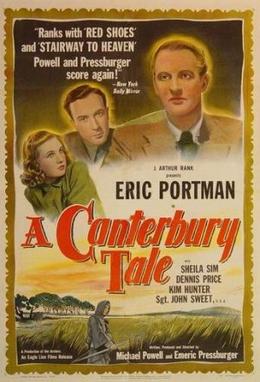
A Canterbury Tale is a 1944 British film by Michael Powell and Emeric Pressburger starring Eric Portman, Sheila Sim, Dennis Price and Sgt. John Sweet; Esmond Knight provided narration and played two small roles. For the post-war American release, Raymond Massey narrated and Kim Hunter was added to the film. The film was made in black and white, and was the first of two collaborations between Powell and Pressburger and cinematographer Erwin Hillier.
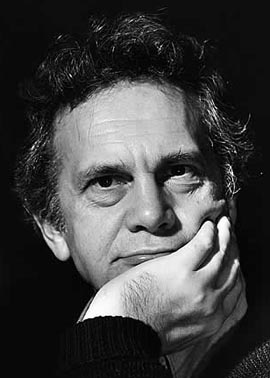
Daniel Raymond Massey was an English actor and performer. He is possibly best known for his starring role in the British TV drama The Roads to Freedom, as Daniel, alongside Michael Bryant. He is also known for his role in the 1968 American film Star!, as Noël Coward, for which he won a Golden Globe Award and an Oscar nomination.

Emeric Pressburger was a Hungarian-British screenwriter, film director, and producer. He is best known for his series of film collaborations with Michael Powell, in a collaboration partnership known as the Archers, and produced a series of films, including 49th Parallel (1941), The Life and Death of Colonel Blimp (1943), A Matter of Life and Death, Black Narcissus (1947), The Red Shoes (1948), and The Tales of Hoffmann (1951).
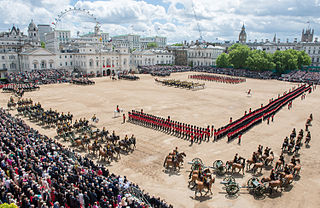
Trooping the Colour is a ceremonial event performed every year on Horse Guards Parade in London, United Kingdom, by regiments of Household Division, to celebrate the official birthday of the British sovereign. It is also known as the Sovereign's Birthday Parade. Similar events are held in other countries of the Commonwealth. In the UK, it is, with the State Opening of Parliament, one of the biggest events of the ceremonial calendar, and watched by millions on TV and on the streets of London.

Peeping Tom is a 1960 British psychological horror-thriller film directed by Michael Powell, written by Leo Marks, and starring Carl Boehm, Anna Massey, and Moira Shearer. The film revolves around a serial killer who murders women while using a portable film camera to record their dying expressions of terror, putting his footage together into a snuff film used for his own self pleasure. Its title derives from the expression "peeping Tom", which describes a voyeur.

A Matter of Life and Death is a 1946 British fantasy-romance film set in England during World War II.

Anna Raymond Massey was an English actress. She won a BAFTA Best Actress Award for the role of Edith Hope in the 1986 TV adaptation of Anita Brookner's novel Hotel du Lac, a role that one of her co-stars, Julia McKenzie, has said "could have been written for her". Massey is also well-known for her role in Alfred Hitchcock's Frenzy (1972) as a barmaid who becomes involved with a suspected killer. She performed over one hundred character roles in British film and television.

Roger Livesey was a British stage and film actor. He is most often remembered for the three Powell & Pressburger films in which he starred: The Life and Death of Colonel Blimp, I Know Where I'm Going! and A Matter of Life and Death. Tall and broad with a mop of chestnut hair, Livesey used his highly distinctive husky voice, gentle manner and athletic physique to create many notable roles in his theatre and film work.
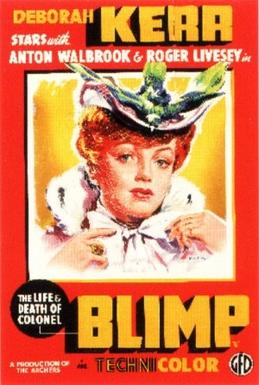
The Life and Death of Colonel Blimp is a 1943 British romantic-war film written, produced and directed by the British film-making team of Michael Powell and Emeric Pressburger. It stars Roger Livesey, Deborah Kerr and Anton Walbrook. The title derives from the satirical Colonel Blimp comic strip by David Low, but the story is original. One film critic has described it as "England's greatest film ever" and it is renowned for its sophistication and directorial brilliance as well as for its script, the performances of its large cast and for its pioneering Technicolor cinematography. Among its distinguished company of actors, particular praise has been reserved for Livesey, Walbrook and Kerr.
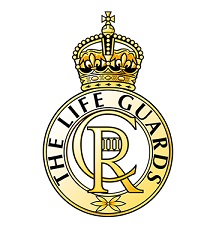
TheLife Guards (LG) is the most senior regiment of the British Army and part of the Household Cavalry, along with The Blues and Royals.

The British film-making partnership of Michael Powell (1905–1990) and Emeric Pressburger (1902–1988)—together often known as The Archers, the name of their production company—made a series of influential films in the 1940s and 1950s. Their collaborations—24 films between 1939 and 1972—were mainly derived from original stories by Pressburger with the script written by both Pressburger and Powell. Powell did most of the directing while Pressburger did most of the work of the producer and also assisted with the editing, especially the way the music was used. Unusually, the pair shared a writer-director-producer credit for most of their films. The best-known of these are The Life and Death of Colonel Blimp (1943), A Canterbury Tale (1944), I Know Where I'm Going! (1945), A Matter of Life and Death (1946), Black Narcissus (1947), The Red Shoes (1948), and The Tales of Hoffmann (1951).

Contraband (1940) is a wartime spy film by the British director-writer team of Michael Powell and Emeric Pressburger, which reunited stars Conrad Veidt and Valerie Hobson after their earlier appearance in The Spy in Black the previous year. On this occasion, Veidt plays a hero, something he did not do very often, and there is also an early (uncredited) performance by Leo Genn.
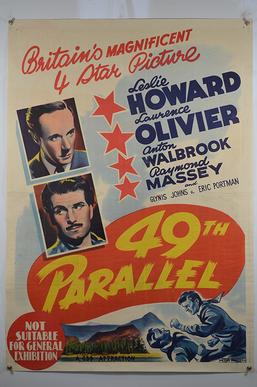
49th Parallel is a 1941 British war drama film. It was the third film made by the British filmmaking team of Michael Powell and Emeric Pressburger. It was released in the United States as The Invaders. The British Ministry of Information approached Michael Powell to make a propaganda film for them, suggesting he make "a film about mine-sweeping". Instead, Powell decided to make a film to help sway opinion in the then-neutral United States. Said Powell, "I hoped it might scare the pants off the Americans" and thus bring them into the war. Screenwriter Emeric Pressburger remarked, "Goebbels considered himself an expert on propaganda, but I thought I'd show him a thing or two". Powell persuaded the British and Canadian governments and started location filming in 1940, but by the time the film appeared, in March 1942, the United States, which had been trying to stay out of the war in Europe, had been drawn into taking sides against Germany.
Brian Easdale was a British composer of operatic, orchestral, choral and film music, best known for his ballet film score The Red Shoes of 1948.
"The British Grenadiers" is a traditional marching song of British and Commonwealth military units whose badge of identification features a grenade, the tune of which dates from the 17th century. It is the regimental quick march of the Royal Artillery, the Corps of Royal Engineers, the Honourable Artillery Company, the Grenadier Guards, and the Royal Regiment of Fusiliers. It is also an authorized march of the Royal Australian Artillery, the Royal Gibraltar Regiment, the Royal Regiment of Canadian Artillery, the Canadian Grenadier Guards, the Royal Regiment of Canada, and the Princess Louise Fusiliers. The standard orchestration for the military band was approved in 1762, when the Royal Artillery Band became recognized officially, and for all other "grenade" regiments in 1763, when the remaining unofficial bands gained official status.
Ian Christie is a British film scholar. He has written several books including studies of the works of Michael Powell and Emeric Pressburger, Martin Scorsese and the development of cinema. He is a regular contributor to Sight & Sound magazine and a frequent broadcaster. Christie is Professor of Film and Media History at Birkbeck, University of London.
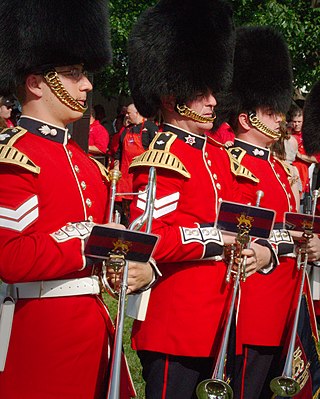
The Governor General's Foot Guards Band is an authorized Canadian Forces 35-piece brass and reed band. It consists of serving members of the CAF who parade on a part-time basis. It serves as the regimental band of the Governor General's Foot Guards (GGFG) and is the most senior band of the Canadian Army Primary Reserve.

The Bands of the Household Division refer to the grouping of the seven military bands of the Household Division, which forms a part of the British Army's London District. The bands belong to five regiments of foot guards and two Household Cavalry regiments.
















